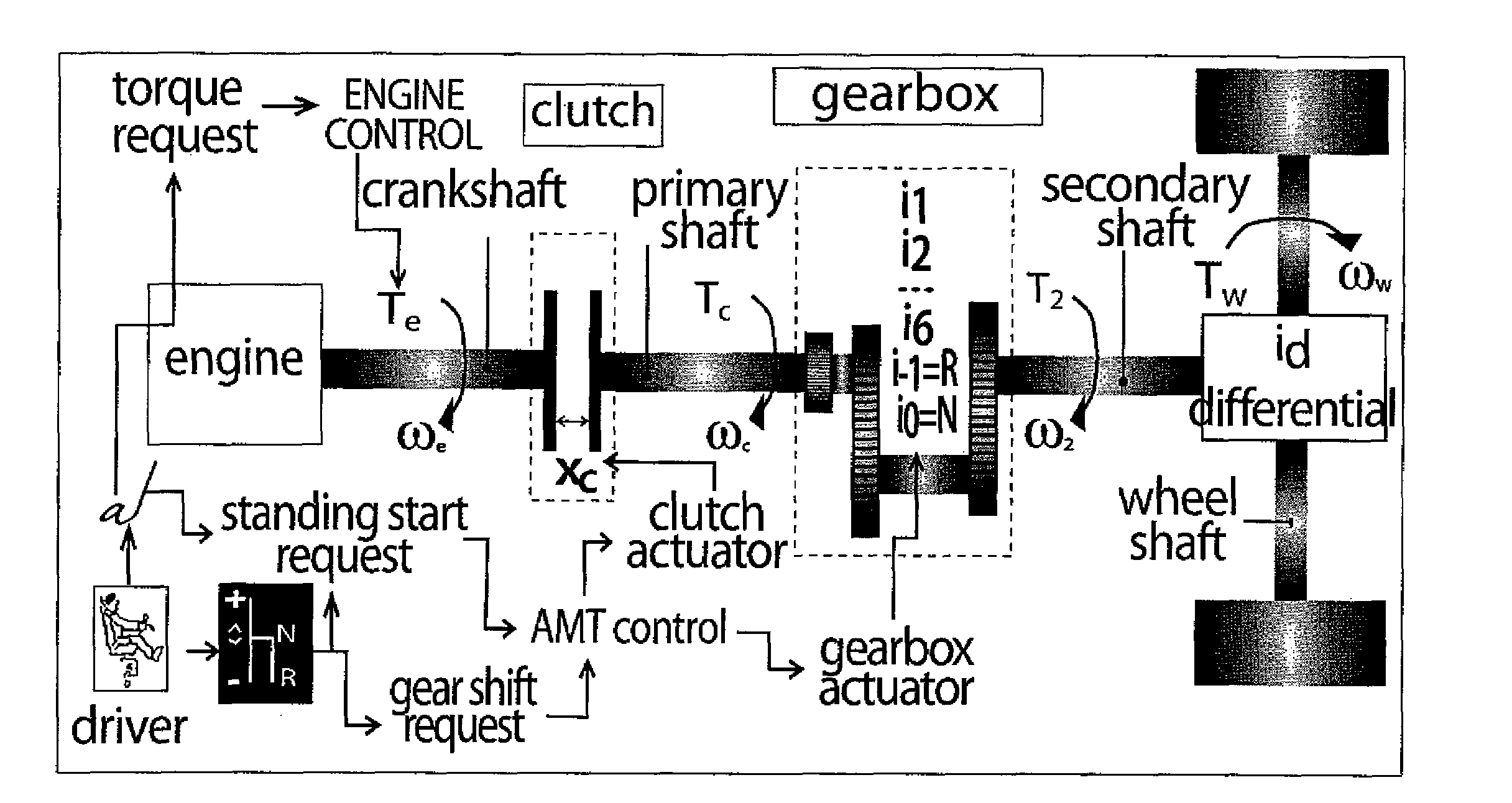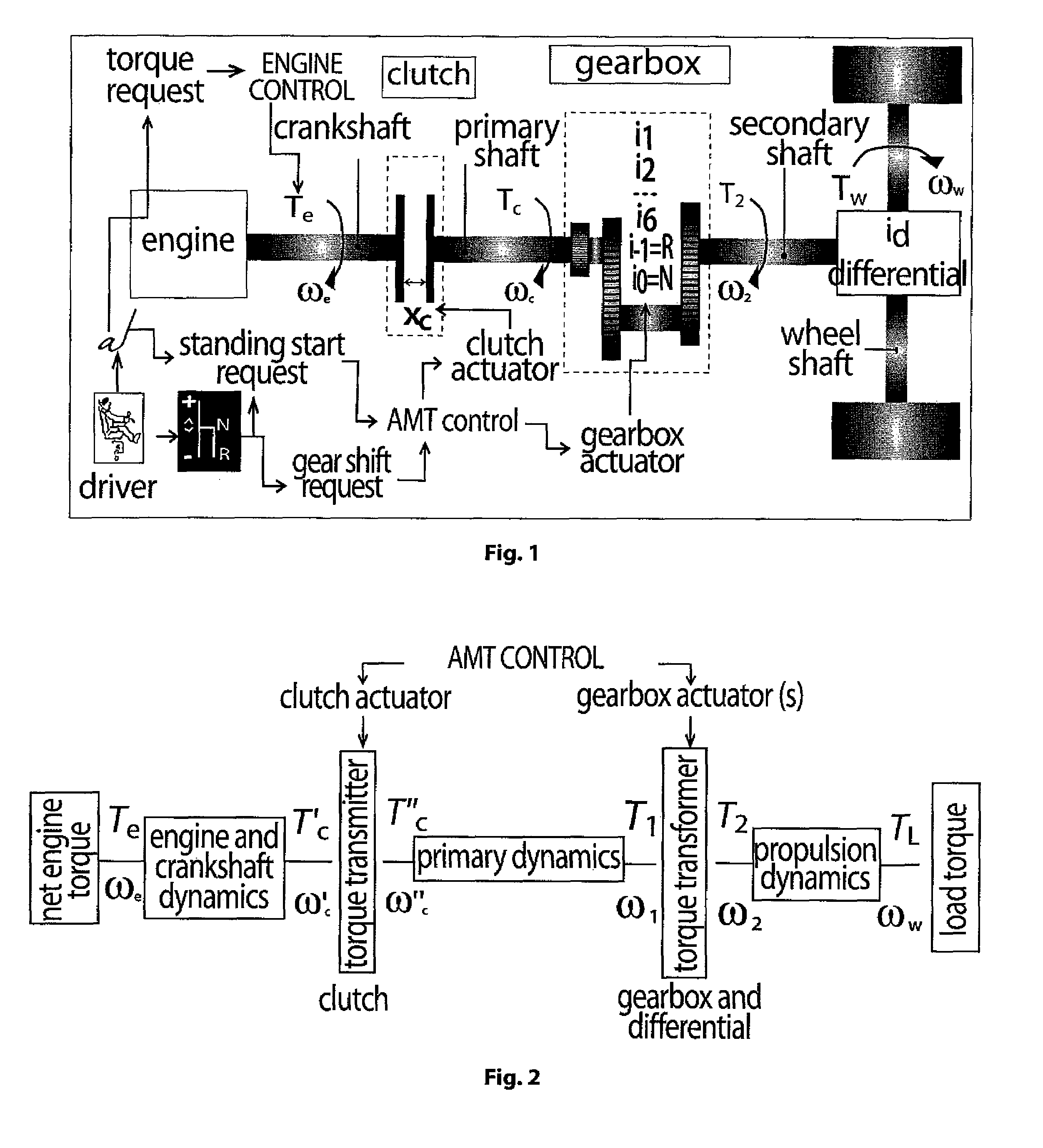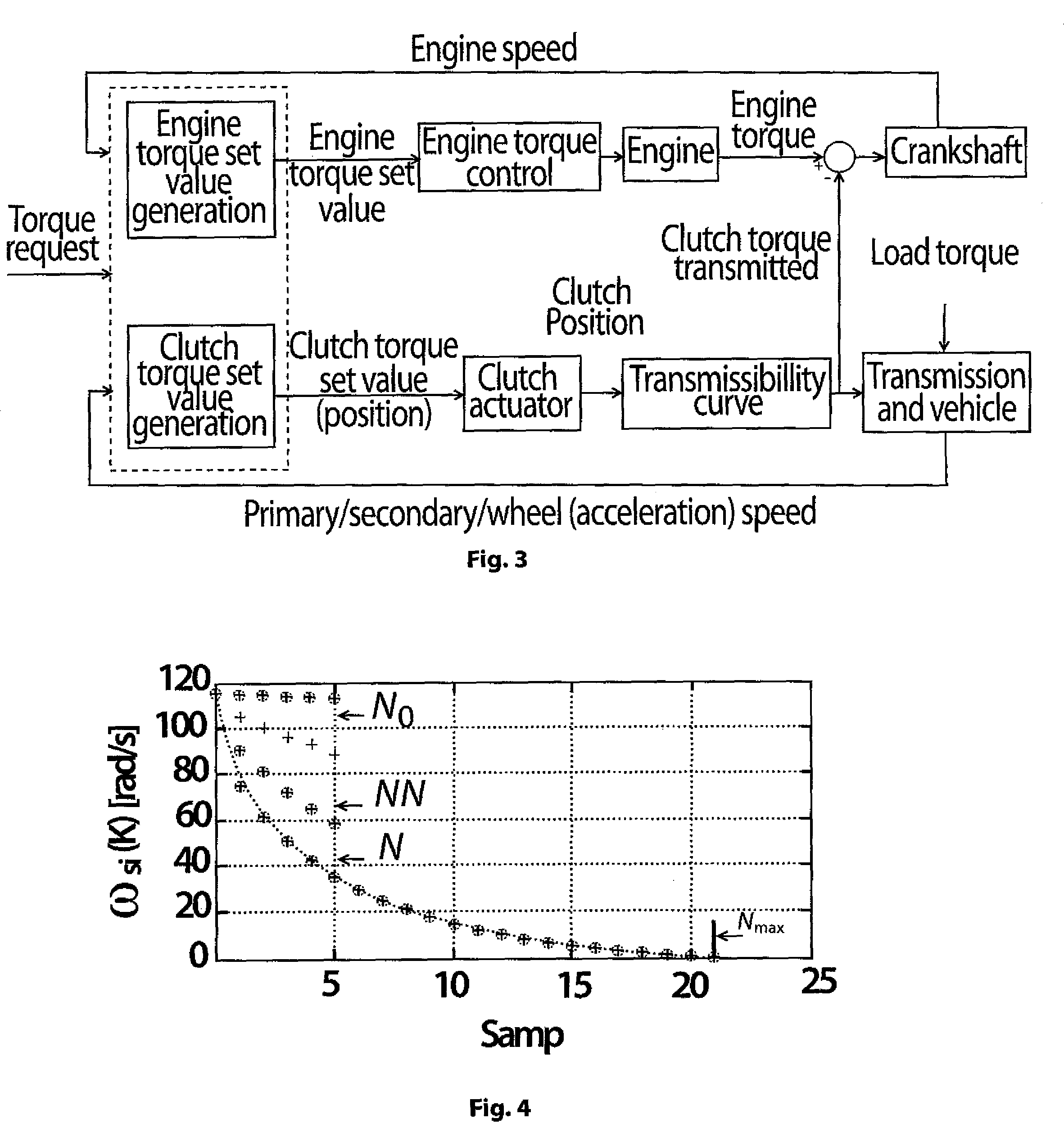Method of controlling the closing phase of a clutch of an automated automobile transmission system
a technology of automatic automobile transmission and closing phase, which is applied in the direction of adaptive control, fluid couplings, instruments, etc., can solve the problems of not being able to explicitly manage these constraints, unable to easily translate specifications, and long calibration time to fill in maps
- Summary
- Abstract
- Description
- Claims
- Application Information
AI Technical Summary
Benefits of technology
Problems solved by technology
Method used
Image
Examples
Embodiment Construction
[0036]Progressive closing of a clutch and its coordination with the production of a given engine torque is a key phase of automated transmission control. The following points have to be ensured during this phase:
maintenance of the powertrain (the system) smooth running: no stalling, no engine over-revving;
driver's comfort: oscillation minimization upon clutch closing;
respect for the driver's request: for example, shorter standing start if one presses the accelerator pedal down harder, standing start abandoned if one releases the pedal.
[0037]According to the invention, in order to take into account these specifications in a transparent manner (for the driver), an approach based on a control law that can optimize a criterion while managing constraints is used. The technique referred to as constrained model predictive control (CMPC) described, among others, in D. Q. Mayne, J. B. Rawlings, C. V. Rao, and P. O. Scokaert, “Constrained Model Predictive Control: Stability and Optimality,” A...
PUM
 Login to View More
Login to View More Abstract
Description
Claims
Application Information
 Login to View More
Login to View More - R&D
- Intellectual Property
- Life Sciences
- Materials
- Tech Scout
- Unparalleled Data Quality
- Higher Quality Content
- 60% Fewer Hallucinations
Browse by: Latest US Patents, China's latest patents, Technical Efficacy Thesaurus, Application Domain, Technology Topic, Popular Technical Reports.
© 2025 PatSnap. All rights reserved.Legal|Privacy policy|Modern Slavery Act Transparency Statement|Sitemap|About US| Contact US: help@patsnap.com



